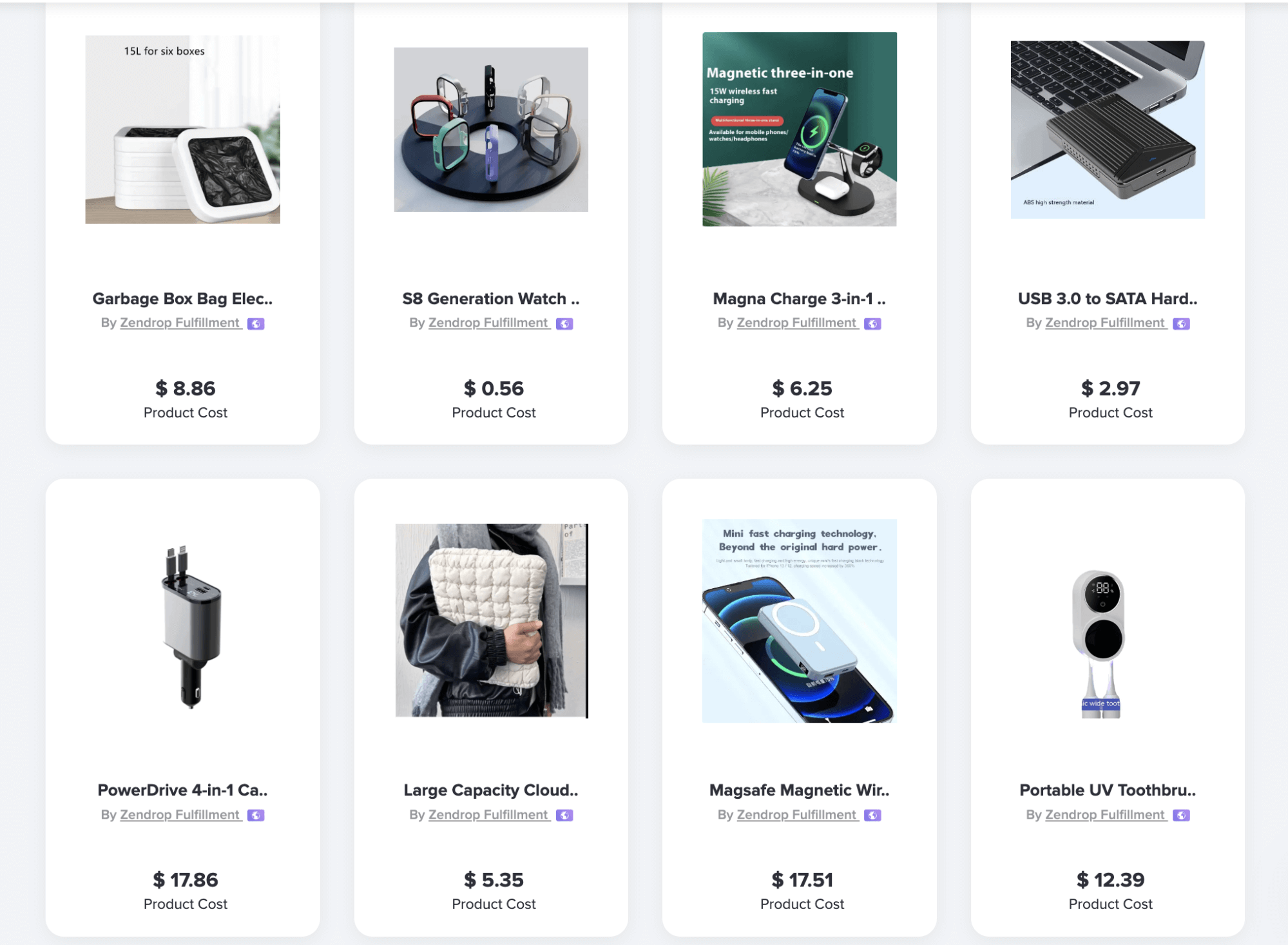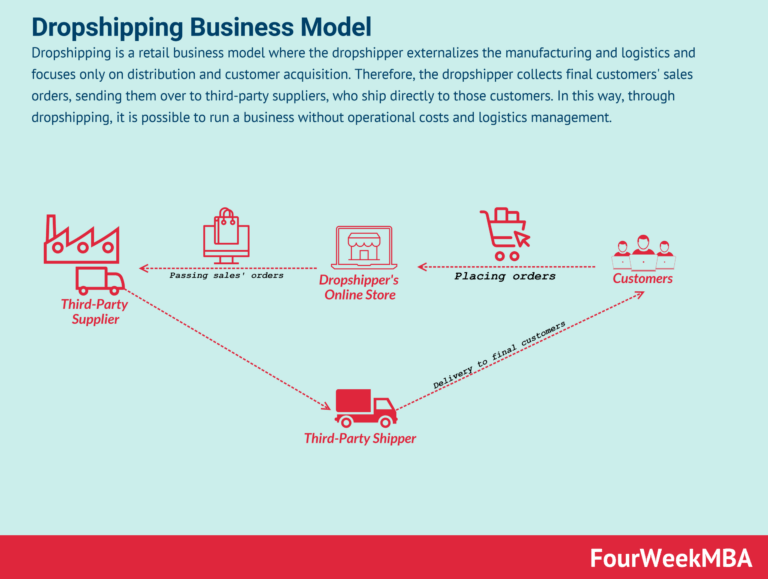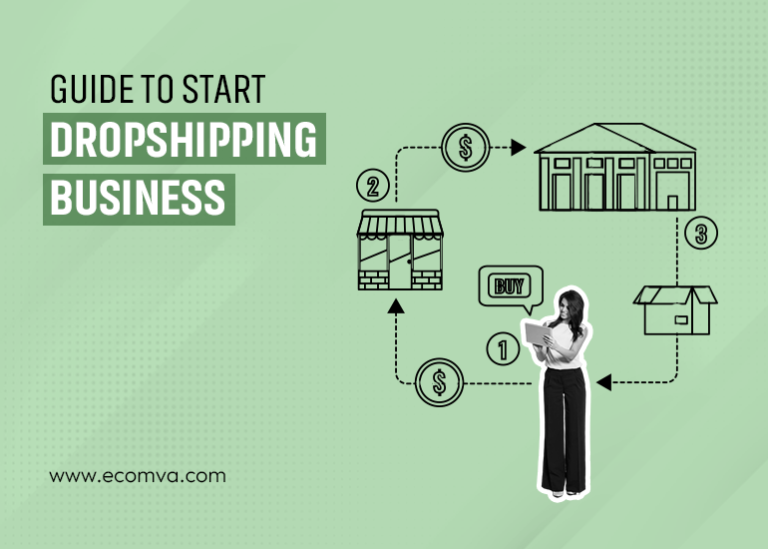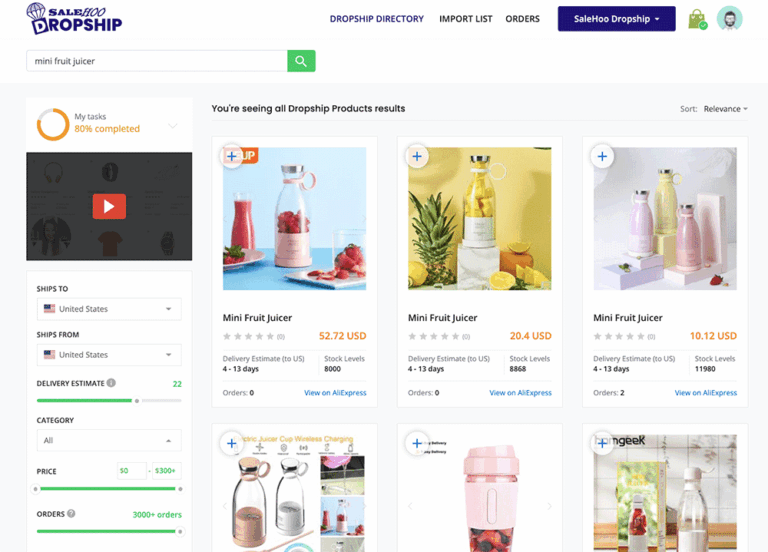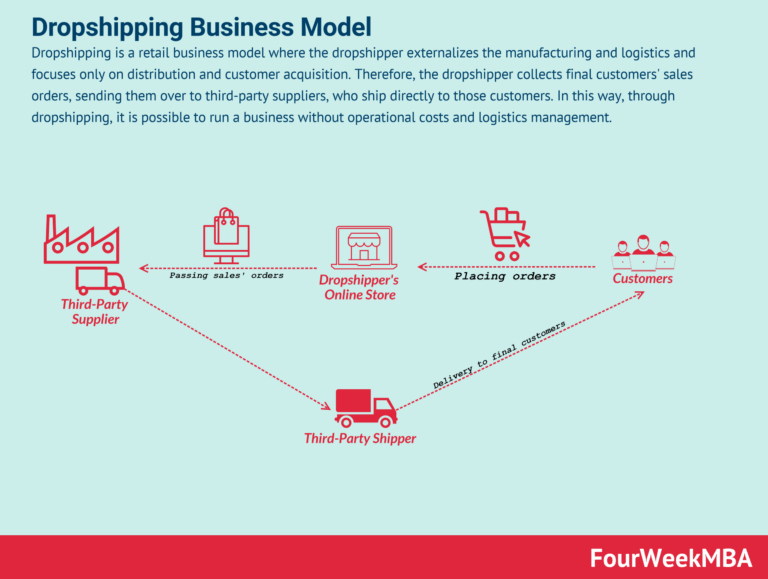What Is Dropshipping and How Does It Work? (2025)
Your Complete Guide to top dropshipping products
Introduction to Your Dropshipping Journey
Congratulations on taking the first step toward your entrepreneurial dream! If you’re reading this, it’s clear that you have the ambition and drive to start your own online business. In today’s digital age, launching a business has never been more accessible, and dropshipping is one of the most attractive models for aspiring entrepreneurs.
So, what exactly is dropshipping? In simple terms, dropshipping is an e-commerce business model that allows you to sell products online without the need to hold any inventory. When a customer places an order through your online store, a third-party supplier takes care of fulfilling that order and shipping it directly to the customer. This means you can focus on marketing your products and growing your brand without the hassle of managing stock or handling logistics.
One of the biggest appeals of dropshipping is the low startup cost. You don’t need to invest heavily in inventory or warehouse space, making it a perfect option for beginners. Additionally, the flexibility it offers allows you to test various products and niches without the financial risk that traditional retail models often entail. This flexibility means you can adapt your business strategy quickly based on market trends and customer preferences.
In this guide, we will provide you with a complete roadmap to navigate the dropshipping landscape successfully. You will learn how to identify trending products that resonate with your target audience, explore effective marketing strategies to attract customers, and discover the essential tools that can streamline your operations. We’ll also delve into the qualities that make a dropshipping product a winner, ensuring you have the knowledge to make informed decisions.
By the end of this guide, you’ll be equipped with actionable insights and strategies to turn your dropshipping dream into a reality. Remember, every successful entrepreneur started where you are now—full of ambition and eager to learn. With dedication and the right approach, you can build a profitable online business that not only meets your financial goals but also fulfills your passion for entrepreneurship. Let’s get started on this exciting journey together!
What You’ll Learn In This Guide
- Your Complete Guide to top dropshipping products
- How Does Dropshipping Actually Work? A Step-by-Step Breakdown
- The Pros and Cons of Dropshipping: Is It Right for You?
- Step 1: Finding a Profitable Niche and Winning Products
- Step 2: Choosing the Right Dropshipping Suppliers
- Step 3: Building Your Online Store
- Step 4: Marketing Your Dropshipping Business to Get Sales
- Common Mistakes to Avoid as a Beginner
- Frequently Asked Questions (FAQs) about top dropshipping products
- Conclusion: Your Next Steps to Launching Your Business
- Important Disclaimer
How Does Dropshipping Actually Work? A Step-by-Step Breakdown
Understanding the Dropshipping Model: A Step-by-Step Guide
If you’re considering starting a dropshipping business, it’s essential to grasp how the model works. Dropshipping allows you to sell products online without holding any inventory, making it an attractive option for aspiring entrepreneurs. Here’s a breakdown of the process, step-by-step.
- Customer Places an Order on Your Online Store
-
The journey begins when a customer visits your e-commerce website and finds a product they wish to purchase. They add the item to their cart and proceed to checkout, where they enter their shipping and payment information. This moment is crucial as it signifies a successful transaction on your platform.
-
You Receive the Payment
-
Once the customer completes the checkout process, you receive the payment for the order. This is the moment when the money flows into your account. It’s important to note that this amount will typically be the retail price of the product, which includes your markup over the supplier’s cost. For instance, if you sell a product for $30 and your supplier charges you $20, you pocket the $10 difference as your profit.
-
You Forward the Order to Your Supplier
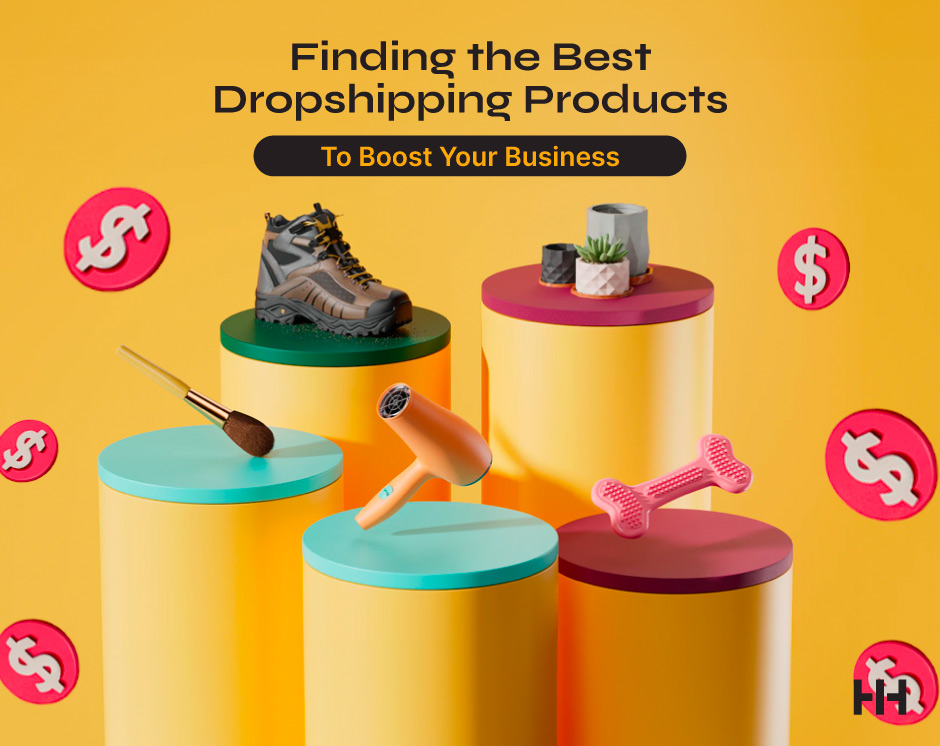
-
After receiving the payment, you need to act quickly. You’ll place the order with your supplier by forwarding the customer’s order details, including the product information and shipping address. This step is crucial since it initiates the fulfillment process. Many dropshipping platforms automate this step, allowing you to streamline operations and save time.
-
The Supplier Ships the Product Directly to the Customer
- Upon receiving your order, the supplier will package the product and ship it directly to the customer. This means that the customer never knows that you are using a third party for fulfillment. The supplier usually includes your branding (if applicable) in the packaging, which helps maintain your brand identity. The goods flow directly from the supplier to the customer without you ever handling the product.
The Flow of Money and Goods
To visualize the flow of money and goods in dropshipping, think of yourself as a digital storefront and middleman. Here’s how it works:
- Money Flow: The customer pays you, and you pay the supplier. The payment you receive is higher than what you pay to the supplier, allowing you to keep the profit margin.
- Goods Flow: The product is shipped from the supplier to the customer without ever being stored or handled by you.
Analogy: The Restaurant Model
To make this clearer, consider the analogy of a restaurant. When a customer orders a meal, the restaurant doesn’t necessarily have all the ingredients in stock. Instead, the restaurant has a relationship with suppliers who provide the ingredients when needed. The restaurant takes the order, collects payment, and then instructs the supplier to deliver the ingredients, which are then used to create the meal. The finished dish is served to the customer, who is unaware of the behind-the-scenes operations.
Conclusion
Starting a dropshipping business can be an empowering venture with the right understanding of how the model functions. By acting as the intermediary between the customer and the supplier, you can focus on marketing and growing your brand without the burdens of inventory management. Remember, success in dropshipping hinges on choosing the right products, understanding your market, and fostering strong relationships with reliable suppliers. Take these steps, and you’ll be on your way to building a thriving online business!
The Pros and Cons of Dropshipping: Is It Right for You?
Advantages and Challenges of Dropshipping
| Advantages of Dropshipping (Pros) | Challenges of Dropshipping (Cons) |
|---|---|
| Low Startup Costs | Low Profit Margins |
| No need to invest in inventory upfront. | Profit margins can range from 10% to 30%, making it hard to scale. |
| Easy to Start and Operate | High Competition |
| Setting up an online store is relatively simple, with many platforms available. | The low barrier to entry attracts many entrepreneurs, increasing competition. |
| Flexible Location | Limited Control Over Supply Chain |
| Operate your business from anywhere with an internet connection. | Dependence on third-party suppliers can lead to quality issues and shipping delays. |
| Wide Range of Products | Customer Service Challenges |
| Easily offer a diverse selection of products without holding inventory. | Issues with fulfillment can lead to customer dissatisfaction and increased returns. |
| No Inventory Management | Difficulty in Branding |
| Suppliers handle storage and shipping, allowing focus on marketing. | It can be challenging to create a unique brand when selling the same products as competitors. |
| Potential for Scalability | Product Quality Risks |
| As sales increase, you can scale without worrying about warehouse space. | Inconsistent product quality from suppliers can damage your store’s reputation. |
| Access to Global Markets | Time-Consuming Research |
| You can source products from suppliers worldwide, expanding your market reach. | Continuous product research is necessary to stay competitive. |
Expanding on the Advantages
One of the most significant advantages of dropshipping is the low financial risk associated with starting this business model. Traditional retail requires substantial upfront investment in inventory, warehousing, and logistics. In contrast, dropshipping allows you to launch your online store without the burden of inventory costs. This makes it particularly appealing for aspiring entrepreneurs and beginners who may not have a substantial budget.
Additionally, the ease of operation is a critical factor that draws many people to dropshipping. With numerous e-commerce platforms available, such as Shopify and WooCommerce, setting up an online store can be completed in a matter of hours. You can focus on marketing and customer engagement rather than managing physical products. This operational flexibility is further enhanced by the ability to work from anywhere, which is particularly attractive in today’s digital landscape.
Another appealing aspect is the wide range of products you can offer. Whether you’re interested in niche markets or trending items, dropshipping allows you to curate a diverse product catalog without the risk of unsold inventory. This flexibility can lead to innovative marketing strategies, as you can quickly pivot to new products based on market trends and customer feedback.
Addressing the Challenges
While dropshipping offers many advantages, it is essential to acknowledge its challenges. Low profit margins are one of the most significant hurdles. With profit margins typically ranging from 10% to 30%, it can be challenging to scale your business and achieve substantial earnings. To mitigate this, it’s crucial to conduct thorough product research and identify high-demand items that can yield better margins. Additionally, consider upselling or cross-selling complementary products to enhance your average order value.
High competition is another challenge that dropshippers face. The low barrier to entry means that many entrepreneurs are vying for the same customer base. To stand out, it is vital to carve out a unique selling proposition (USP) for your brand. This could involve focusing on a specific niche, offering exceptional customer service, or providing unique product descriptions and marketing materials.
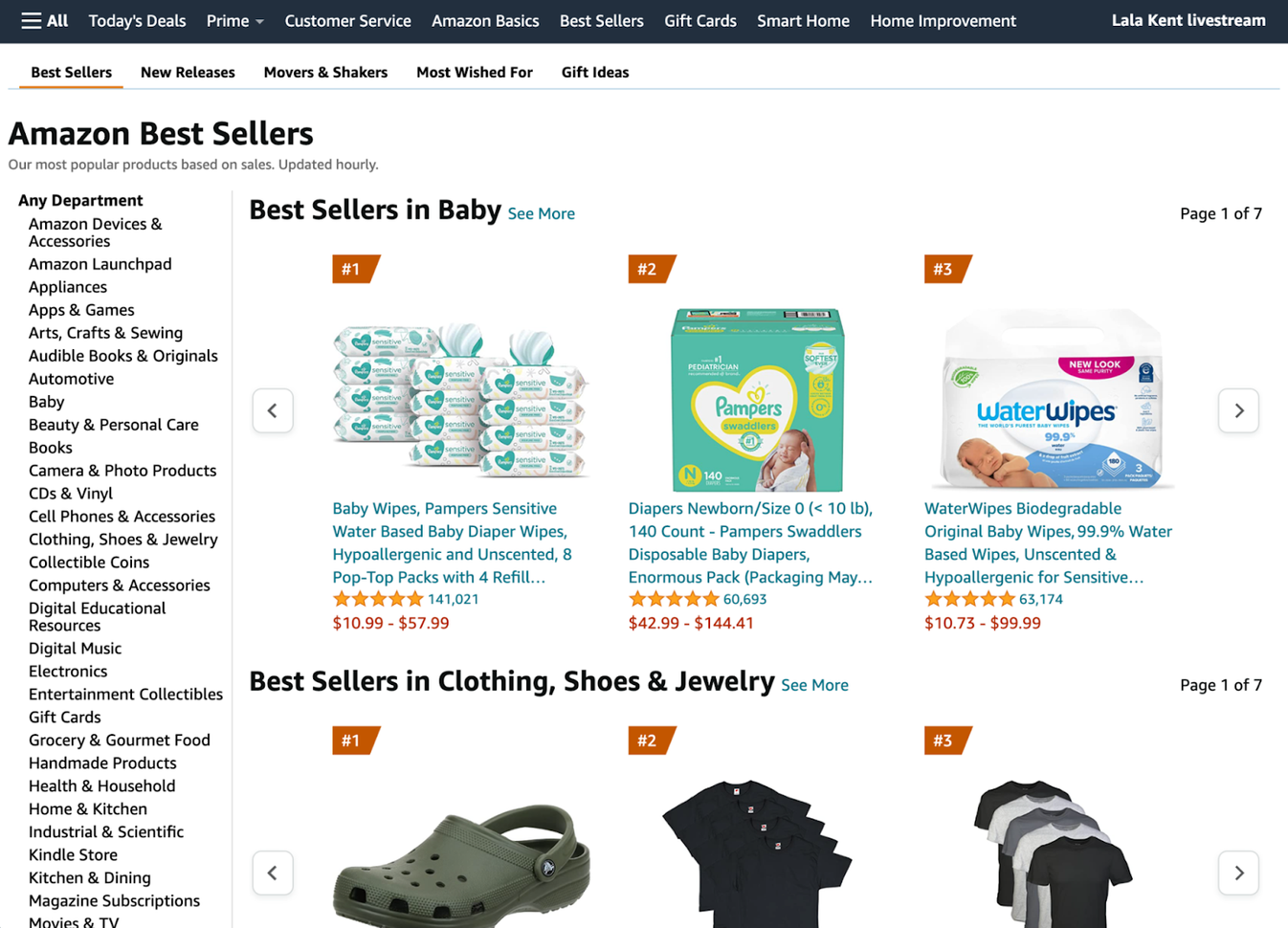
The limited control over the supply chain is a concern that can impact customer satisfaction. As a dropshipper, you rely on third-party suppliers for inventory quality, shipping times, and order fulfillment. If a supplier fails to deliver on time or provides subpar products, your reputation is at stake. To counter this, it’s essential to thoroughly vet potential suppliers and maintain open communication with them to ensure a smooth operation.
Lastly, the time-consuming nature of product research cannot be overlooked. To stay competitive, you must continuously monitor market trends, analyze competitors, and adapt your product offerings accordingly. Utilizing tools like Google Trends and social media analytics can streamline this process and help you identify winning products more effectively.
Conclusion
In conclusion, dropshipping can be a viable path for aspiring entrepreneurs looking to enter the e-commerce space with minimal investment. However, it is crucial to weigh the pros and cons carefully. By understanding the challenges and implementing strategies to overcome them, you can set yourself up for success in this competitive landscape. With dedication and smart marketing, dropshipping can lead to a profitable online business that suits your lifestyle and goals.
Step 1: Finding a Profitable Niche and Winning Products
What Makes a Good Niche?
Finding a profitable niche is crucial for your dropshipping success. A good niche should have the following characteristics:
-
Passion and Interest: Choose a niche that you are passionate about. This will keep you motivated and engaged, making it easier to connect with your audience.
-
Market Demand: Ensure there is a substantial demand for the products in your niche. Tools like Google Trends can help you gauge interest over time.
-
Profitability: Look for niches that allow for decent profit margins. Ideally, products should be priced between $20 to $200, as this range tends to yield better profits after accounting for shipping and supplier costs.
-
Low Competition: While competition can be a sign of a viable market, you want to avoid overly saturated niches. A little research will help you identify areas where you can stand out.
-
Sustainability: Select a niche that won’t fade away quickly. Trends can be fleeting, so consider niches with longevity, like health and wellness, pets, or home improvement.
How to Brainstorm Niche Ideas
Once you understand what makes a good niche, it’s time to brainstorm ideas. Here are some effective methods:
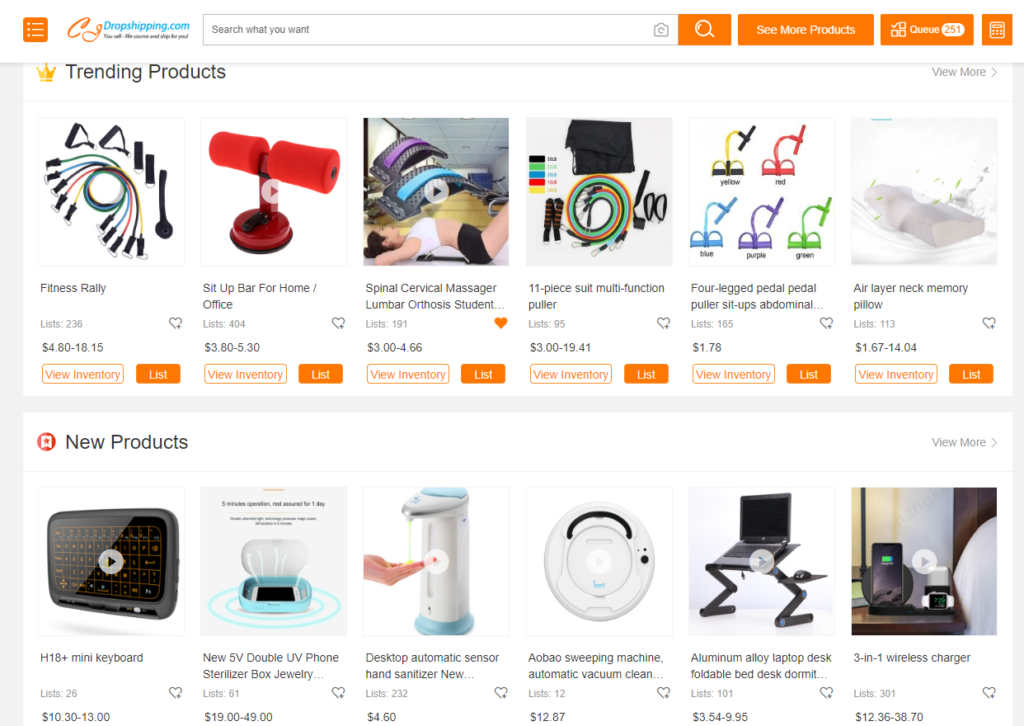
-
Identify Your Interests: Make a list of hobbies, interests, or skills you possess. Think about how these could translate into products.
-
Research Trends: Utilize platforms like Google Trends, Pinterest, and Instagram to see what’s currently popular. Look for emerging trends that align with your interests.
-
Explore Online Marketplaces: Websites like Amazon, eBay, and Etsy can give you insight into best-selling products. Check their best-seller lists for inspiration.
-
Engage in Online Communities: Forums, Facebook groups, and Reddit can be gold mines for niche ideas. Observe discussions and see what problems people are looking to solve.
-
Keyword Research: Use tools like Ubersuggest or SEMrush to find keywords related to your interests. High search volume and low competition keywords can indicate a profitable niche.
Validating Your Niche
Before diving into product selection, it’s crucial to validate your niche to ensure there’s a market for it. Here are steps to validate your niche effectively:
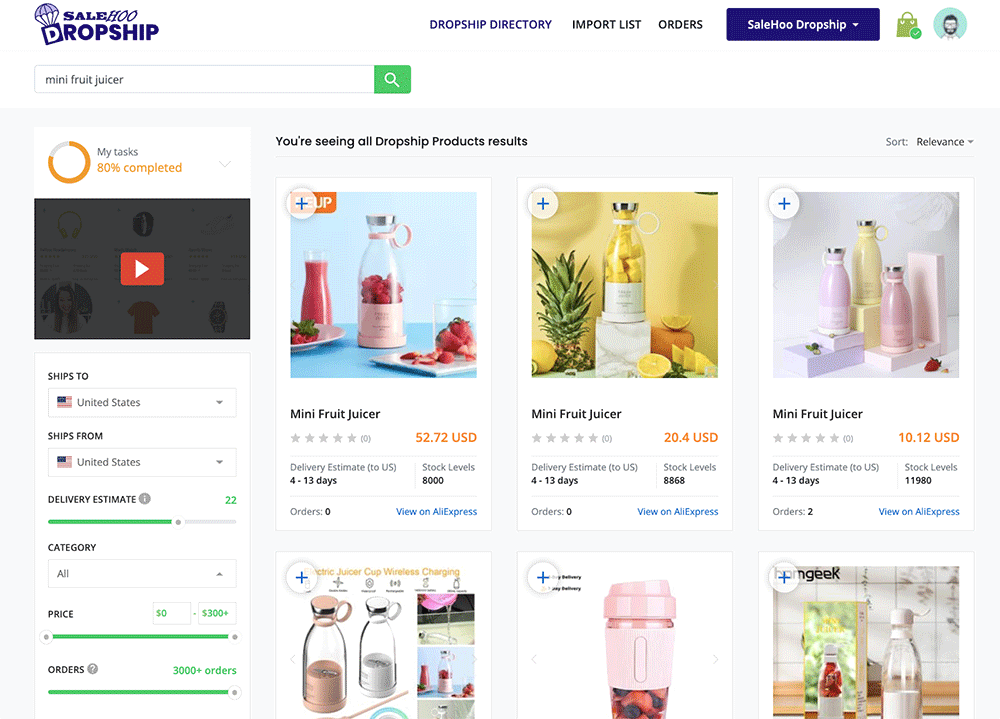
-
Conduct Surveys: Use platforms like SurveyMonkey or Google Forms to create surveys. Ask your target audience about their preferences, needs, and willingness to purchase products in your niche.
-
Analyze Competition: Look at what successful competitors are doing. Tools like SimilarWeb or SEMrush can provide insights into their traffic sources, customer demographics, and product offerings.
-
Use Social Media Polls: Platforms like Instagram and Twitter allow you to create polls to gauge interest in your niche. This can provide immediate feedback from potential customers.
-
Test with Minimal Viable Products (MVP): Launch a simple version of your product or create a landing page to gauge interest. Use social media ads to drive traffic and see if people are willing to sign up or purchase.
-
Evaluate Market Size: Use tools like Statista or IBISWorld to get data on market size and growth projections for your niche. A growing market is a good sign of longevity.
Methods for Finding Winning Products
Once you’ve settled on a niche, the next step is finding winning products that will resonate with your audience. Here are some effective methods:
-
Supplier Marketplaces: Utilize platforms like AliExpress, Oberlo, or Spocket. These sites not only provide a range of products but also insights into sales volumes and ratings. Look for products with high ratings and positive reviews.
-
Social Media Trend Tools: Platforms like TikTok and Instagram are invaluable for spotting trends. Use hashtag searches to find trending products. Tools like BuzzSumo can also help identify popular content and products in your niche.
-
Google Trends: This tool allows you to see how product interest has changed over time. Enter relevant keywords to identify spikes in interest, which can indicate a good time to launch products.
-
Customer Feedback: Pay attention to customer reviews on competitor websites. Look for common complaints or requests that you can address with your product offering.
-
Criteria for Good Dropshipping Products:
- Price Point: Aim for products priced between $20 to $200 to ensure healthy profit margins.
- Problem-Solving: Products that solve specific problems tend to sell better. Think about what pain points your target audience may have.
- Compact and Lightweight: Products that are easy to ship will help you save on shipping costs and reduce potential delivery issues.
- Not Easily Found in Stores: Unique products that are hard to find locally often attract more interest. This creates a sense of exclusivity.
Conclusion
Finding a profitable niche and winning products is a foundational step in building a successful dropshipping business. By focusing on your interests, validating your ideas, and using effective product research methods, you can carve out a space in the competitive world of e-commerce. Remember, the journey may require patience and adaptability, but with the right strategies, you can create a thriving online store. Start today, and don’t hesitate to iterate on your ideas as you learn more about your market and audience. Happy dropshipping!
Step 2: Choosing the Right Dropshipping Suppliers
Understanding Dropshipping Suppliers
When starting your dropshipping business, selecting the right suppliers is a critical step that can significantly impact your success. Reliable suppliers ensure quality products, timely shipping, and effective communication, which are essential for maintaining customer satisfaction. Below, we explore some of the most popular platforms to find dropshipping suppliers, along with their pros and cons, and provide a checklist to help you choose the best supplier for your business.
AliExpress
Overview: AliExpress is one of the largest online retail platforms globally, offering a wide variety of products at competitive prices. It connects buyers directly with manufacturers and wholesalers, making it a popular choice for dropshippers.
Pros:
- Vast Product Selection: With millions of products available across numerous categories, AliExpress provides ample options for finding trending items.
- No Minimum Order Requirement: You can order products in small quantities, which is ideal for testing different products without a significant upfront investment.
- User Reviews: Customer reviews and ratings for products and suppliers can help you gauge product quality and reliability.
Cons:
- Shipping Times: Many products ship from China, leading to longer shipping times, which can impact customer satisfaction.
- Quality Control: The quality of products can vary significantly between suppliers, requiring careful selection and testing.
- Communication Barriers: Depending on the supplier, there may be language barriers that can complicate communication.
CJ Dropshipping
Overview: CJ Dropshipping is a comprehensive dropshipping platform that offers sourcing, warehousing, and shipping services. It aims to simplify the dropshipping process for entrepreneurs.
Pros:
- USA Warehousing: CJ Dropshipping offers warehouses in the USA and other regions, allowing for faster shipping times to customers in these areas.
- Custom Branding: The platform allows for customization of packaging, enabling you to create a unique brand identity.
- Product Sourcing Services: CJ Dropshipping can help you find products not listed on their site, providing tailored sourcing solutions.
Cons:
- Learning Curve: The platform can be overwhelming for beginners due to its extensive features and options.
- Variable Shipping Costs: Depending on the product and shipping method, costs can vary, so it’s essential to calculate these when pricing your products.
- Limited Payment Options: Some users report limited payment methods, which could affect your transaction flexibility.
USA-Based Suppliers
Overview: Sourcing products from USA-based suppliers can be advantageous for dropshippers looking to reduce shipping times and enhance customer service.
Pros:
- Faster Shipping Times: Products shipped from the USA typically arrive much quicker than those shipped internationally, improving customer satisfaction.
- Easier Communication: Working with suppliers in the same time zone can simplify communication and support.
- Quality Assurance: Many USA-based suppliers maintain higher quality control standards, reducing the risk of receiving subpar products.
Cons:
- Higher Costs: Products from USA suppliers may be more expensive than those from overseas, which could impact your profit margins.
- Limited Product Range: The variety of products may not be as extensive as international platforms, which could limit your options.
- Minimum Order Requirements: Some USA suppliers may have minimum order quantities, making it harder to test new products without a larger upfront investment.
What to Look for in a Good Supplier
When selecting a dropshipping supplier, it’s essential to evaluate them against specific criteria. Here’s a checklist to guide you:
-
Communication: Ensure the supplier is responsive and communicates clearly. Quick responses to inquiries are crucial for resolving issues and maintaining a smooth operation.
-
Shipping Times: Check the estimated shipping times to your target market. Fast shipping is vital for customer satisfaction and repeat business.
-
Product Quality: Look for suppliers with positive reviews and high ratings for product quality. Order samples to assess the quality firsthand before listing items in your store.
-
Return Policies: Understand the supplier’s return and refund policies. A clear and fair return policy will help you manage customer expectations and enhance trust.
-
Pricing: Analyze the pricing structure to ensure it allows for a reasonable profit margin. Be cautious of hidden fees that could cut into your profits.
-
Inventory Management: Check if the supplier offers inventory updates. Real-time inventory tracking can help prevent overselling and stockouts.
-
Branding Options: If branding is important to your business, find suppliers that offer customization options for packaging and products.
-
Payment Methods: Ensure the supplier supports multiple payment options for ease of transaction and security.
-
Shipping Tracking: Look for suppliers that provide tracking information for shipments, allowing you and your customers to monitor order status.
-
Reviews and Testimonials: Research feedback from other dropshippers about their experiences with the supplier. Look for consistent positive feedback regarding reliability and service.
Conclusion
Choosing the right dropshipping supplier is a fundamental step in establishing a successful online business. By carefully evaluating platforms like AliExpress, CJ Dropshipping, and USA-based suppliers, you can find partners who align with your business needs. Remember to leverage the checklist provided to ensure that you make informed decisions that will set your dropshipping venture up for success. With reliable suppliers, you can focus on marketing your products and growing your business, paving the way for future success. Happy dropshipping!
Step 3: Building Your Online Store
Getting Started with Shopify for Your Dropshipping Business
Setting up your online store is an exciting step in your dropshipping journey. With Shopify being one of the most popular platforms for e-commerce, it provides a user-friendly interface, robust features, and extensive support for beginners. Below is a step-by-step guide to building your online store on Shopify.
1. Choosing a Plan
The first step in setting up your Shopify store is selecting the right plan. Shopify offers several pricing tiers, each with different features:
- Basic Shopify: Ideal for beginners, offering essential features for starting an online store.
- Shopify: Adds more advanced reporting and gift card capabilities.
- Advanced Shopify: Best for growing businesses, providing advanced reporting and third-party calculated shipping rates.
Start with the Basic plan to minimize initial costs. You can always upgrade as your business grows. Shopify often provides a free trial, allowing you to explore the platform without commitment.
2. Picking a Theme
Once you’ve selected your plan, it’s time to choose a theme for your store. The theme determines the look and feel of your online shop and can significantly impact user experience.
- Browse Shopify’s Theme Store: There are both free and paid themes available. Look for themes that are mobile-responsive, as a significant portion of online shopping occurs on mobile devices.
- Customization: Choose a theme that allows customization so you can align it with your brand identity. Ensure it has features that support your product type, such as image galleries or customizable layouts.
Take your time to explore different themes, as this will be the foundation of your store’s visual appeal.
3. Setting Up Essential Pages
Creating essential pages is crucial for building trust with your customers. Here are the key pages you should include:
- About Us: Share your story, mission, and values. Let customers know who you are and what your brand stands for.
- Contact Us: Provide multiple ways for customers to reach you, including email, phone, and a contact form. This builds trust and reassures customers that they can communicate with you.
- Policies: Create clear policies on shipping, returns, and privacy. This transparency helps manage customer expectations and builds credibility.
To set up these pages, navigate to the “Online Store” section in Shopify, then go to “Pages.” You can easily create and edit pages from there.
4. Installing Key Apps
To enhance the functionality of your store, consider installing essential apps. Here are some recommendations:
- Import Tool: Apps like DSers or CJ Dropshipping will help you import products from suppliers directly into your store. They simplify the process of managing your product listings.
- Email Marketing: Consider apps like Klaviyo or Omnisend for building your email list and launching marketing campaigns.
- Analytics: Use Google Analytics or Shopify’s built-in analytics to track your store’s performance and understand customer behavior.
To install apps, go to the Shopify App Store, search for the apps you need, and follow the prompts to add them to your store.
5. Setting Up Payment Gateways
A smooth checkout process is critical for converting visitors into customers. Shopify supports multiple payment gateways, allowing you to accept various payment methods.
- Shopify Payments: This is the easiest option to set up, as it integrates seamlessly with your store. It allows customers to pay with credit cards, Apple Pay, and Google Pay.
- Third-Party Gateways: If you prefer to use other payment processors (like PayPal, Stripe, or Authorize.net), you can enable them in the payment settings.
To set up payment gateways, navigate to “Settings” > “Payments” in your Shopify dashboard and follow the instructions to configure your preferred options.
Brief Mention of WooCommerce
While Shopify is an excellent choice for beginners, it’s worth noting that WooCommerce is another viable option for those who prefer more control and customization over their online store. WooCommerce is a plugin for WordPress, allowing you to turn a WordPress site into a fully functional e-commerce store. It’s free to use but requires some technical know-how for setup and maintenance.
Conclusion
Building your dropshipping store on Shopify may seem daunting at first, but by following these steps, you’ll create a strong foundation for your online business. Remember to stay focused on your niche, invest time in product research, and continuously optimize your store for the best customer experience. Your journey into e-commerce is just beginning, and with determination and the right strategies, you’ll be well on your way to success. Happy selling!
Step 4: Marketing Your Dropshipping Business to Get Sales
Social Media Marketing (TikTok & Instagram)
Social media platforms like TikTok and Instagram are powerful tools for marketing your dropshipping business. They allow you to showcase your products creatively and connect with your target audience on a personal level. Here are some actionable tips to get started:
1. Create Engaging Content
- Product Demonstrations: Show your products in action. Create short videos demonstrating how to use your products or showcasing their benefits. For example, if you sell fitness gear, film a workout session using your equipment.
- User-Generated Content (UGC): Encourage your customers to share their experiences using your products. You can create a branded hashtag to collect these posts. Reposting UGC builds community and trust.
- Behind-the-Scenes: Share glimpses of your business operations, such as how you select products or pack orders. This transparency helps build a connection with your audience.
2. Collaborate with Influencers
- Find Micro-Influencers: Reach out to influencers in your niche who have a smaller but engaged following. They often have higher engagement rates and charge less for promotions.
- Product Reviews: Send free samples of your products to influencers in exchange for honest reviews. Their followers trust their recommendations, which can drive traffic to your store.
3. Utilize Stories and Reels
- Instagram Stories: Use Stories to showcase limited-time offers, new arrivals, or customer testimonials. Add interactive elements like polls or questions to engage your audience.
- TikTok Challenges: Participate in trending challenges relevant to your niche. Create fun, shareable content that encourages viewers to engage with your brand.
4. Leverage Hashtags Effectively
- Research Trending Hashtags: Use tools like Hashtagify to find popular hashtags in your niche. This will help your posts reach a broader audience.
- Create a Branded Hashtag: Develop a unique hashtag for your brand that customers can use when they share their purchases. This not only boosts visibility but also fosters community.
Paid Advertising (Facebook/Instagram Ads)
Investing in paid advertising is a smart way to drive targeted traffic to your dropshipping store. Here’s how to make the most of Facebook and Instagram ads:
1. Define Your Target Audience
- Utilize Audience Insights: Use Facebook’s Audience Insights tool to learn about your potential customers’ demographics, interests, and behaviors. This information is crucial for creating targeted ads.
- Create Custom Audiences: Upload your email list or retarget visitors who have previously engaged with your site. This helps you reach people who are already familiar with your brand.
2. Craft Compelling Ad Copy and Visuals
- Focus on Benefits: Highlight the benefits of your products rather than just their features. For example, instead of stating “waterproof backpack,” say “Keep your belongings safe and dry in any weather.”
- High-Quality Images/Videos: Use eye-catching visuals that showcase your products. Consider using lifestyle images that depict the product in use, which can be more relatable to potential customers.
3. A/B Testing
- Experiment with Different Formats: Test various ad formats, such as carousel ads, video ads, or collection ads, to see which performs best.
- Analyze Performance Metrics: Regularly check metrics like click-through rates (CTR) and conversion rates. Adjust your campaigns based on what is working and what isn’t.
4. Set Clear Goals and Budgets
- Define Your Objectives: Whether it’s brand awareness, lead generation, or direct sales, having a clear goal will guide your ad strategy.
- Start Small: If you’re new to paid advertising, start with a modest budget. Monitor your results closely and scale up your investment on successful campaigns.
Search Engine Optimization (SEO)
SEO is essential for driving organic traffic to your dropshipping store. Here’s how to optimize your website effectively:
1. Keyword Research
- Utilize Tools: Use keyword research tools like Google Keyword Planner or Ahrefs to find relevant keywords for your products. Focus on long-tail keywords that indicate buyer intent, such as “eco-friendly yoga mats.”
- Analyze Competitors: Look at the keywords your competitors rank for and identify gaps you can fill with your content.
2. Optimize Product Pages
- Unique Descriptions: Write unique, engaging product descriptions that incorporate your target keywords naturally. Avoid copying manufacturer descriptions.
- Image Optimization: Use descriptive file names and alt text for your images. This not only helps with SEO but also improves accessibility.
3. Build Quality Backlinks
- Guest Blogging: Write guest posts for reputable blogs in your niche. Include links back to your store to drive traffic and improve your site’s authority.
- Influencer Collaborations: Work with influencers to create content that links back to your store. Their audience will trust their recommendations, driving more traffic to your site.
4. Regularly Update Your Content
- Blogging: Start a blog related to your niche. Share helpful tips, product guides, and industry news. This not only drives traffic but also establishes your authority in the market.
- Update Old Posts: Revise and refresh older content to keep it relevant. This can help improve your rankings and drive more traffic over time.
Email Marketing
Email marketing remains one of the most effective channels for driving sales in a dropshipping business. Here’s how to leverage it:
1. Build Your Email List
- Offer Incentives: Encourage visitors to subscribe by offering discounts, freebies, or exclusive content. For instance, “Sign up for 10% off your first order!”
- Use Pop-ups: Implement exit-intent pop-ups that offer discounts or valuable content in exchange for email addresses.
2. Segment Your Audience
- Create Targeted Lists: Segment your email list based on customer behavior, interests, or demographics. This allows you to send personalized content that resonates with each group.
- Tailor Your Messages: Send targeted campaigns to different segments. For example, offer special promotions to repeat customers or re-engagement campaigns to inactive subscribers.
3. Craft Compelling Email Content
- Engaging Subject Lines: Write attention-grabbing subject lines that encourage opens. Use urgency or curiosity to entice readers, such as “Last Chance for 20% Off!”
- Include Clear CTAs: Every email should have a clear call-to-action (CTA), directing readers to your website or a specific product.
4. Analyze and Optimize
- Track Metrics: Monitor open rates, click-through rates, and conversion rates to gauge the effectiveness of your campaigns. Use this data to refine your strategy over time.
- A/B Testing: Experiment with different email formats, subject lines, and content to see what resonates best with your audience.
By implementing these marketing strategies, you can effectively promote your dropshipping business and drive sales. Remember that consistency and adaptability are key—stay engaged with your audience, keep an eye on market trends, and be willing to refine your approach as you learn what works best for your brand. With dedication and the right tactics, your dropshipping venture can thrive!
Common Mistakes to Avoid as a Beginner
1. Choosing a Bad Niche
Mistake: Many beginners jump into dropshipping without thoroughly researching their niche. A bad niche can lead to low demand, high competition, or products that are difficult to market.
Solution: Conduct comprehensive market research before selecting your niche. Use tools like Google Trends, social media analytics, and competitor analysis to identify trending products and underserved markets. Focus on niches that you are passionate about and where you can offer unique value.
2. Not Testing Products
Mistake: Some new dropshippers fail to test their products before listing them on their store. This can lead to poor-quality items reaching customers, which can damage your reputation.
Solution: Always order samples of the products you plan to sell. This allows you to assess the quality, shipping times, and overall customer experience. Testing products helps you identify potential issues before they affect your customers.
3. Poor Customer Service
Mistake: A common pitfall for beginners is neglecting customer service. If customers have questions or issues and cannot get timely responses, they are likely to leave negative reviews or abandon your store.
Solution: Implement a robust customer service strategy. Use chatbots for immediate responses, set up an email support system, and ensure you’re active on social media to address inquiries. Providing excellent customer service can differentiate your brand in a competitive market.
4. Ignoring Shipping Times
Mistake: Many beginners underestimate the importance of shipping times. Long shipping durations can frustrate customers and lead to high return rates.
Solution: Be transparent about shipping times on your website. Choose suppliers with reliable shipping options and consider using local suppliers to reduce delivery times. Consider offering expedited shipping for an additional fee to cater to customers who need items faster.
5. Unrealistic Profit Expectations
Mistake: New dropshippers often expect to make significant profits quickly without understanding the realities of the business model. This can lead to disappointment and frustration.
Solution: Set realistic profit margins and understand that building a successful dropshipping business takes time. Research typical profit margins in your niche (generally between 10% to 30%) and create a detailed financial plan that considers all potential expenses.
6. Neglecting Marketing Strategies
Mistake: Some beginners believe that simply setting up a website will attract customers. Without effective marketing strategies, your store can remain virtually invisible.
Solution: Invest time in learning digital marketing strategies, including SEO, social media marketing, and email campaigns. Use targeted ads on platforms like Facebook and Instagram to reach your ideal audience. Regularly analyze the performance of your marketing efforts and adjust your strategies accordingly.
7. Failing to Build a Brand
Mistake: Many dropshippers focus solely on selling products without establishing a brand identity. This can make it difficult to build customer loyalty and differentiate from competitors.
Solution: Develop a unique brand identity that resonates with your target audience. Create a compelling brand story, design a memorable logo, and maintain consistent messaging across all platforms. Building a strong brand can lead to repeat customers and referrals.
8. Overlooking Supplier Reliability
Mistake: Beginners sometimes choose suppliers based solely on price, ignoring reliability and quality. This can lead to stock issues, quality problems, and shipping delays.
Solution: Research potential suppliers thoroughly. Look for reviews, request samples, and establish clear communication channels. Partner with suppliers who have a proven track record of reliability and quality, as they will significantly impact your business’s success.
9. Not Utilizing Analytics
Mistake: Many new dropshippers fail to track their store’s performance, missing out on valuable insights that could improve their operations.
Solution: Use analytics tools to monitor your website traffic, sales, and customer behavior. Platforms like Google Analytics can provide insights into which products are performing well and where customers are dropping off. Use this data to make informed decisions and optimize your store.
10. Giving Up Too Soon
Mistake: Dropshipping can be challenging, and many beginners give up after facing their first set of obstacles. This mindset can hinder potential success.
Solution: Maintain a growth mindset and understand that setbacks are part of the entrepreneurial journey. Learn from your mistakes, seek advice from mentors or online communities, and stay persistent. Success often comes to those who are willing to adapt and keep pushing forward.
By avoiding these common mistakes, you can set a strong foundation for your dropshipping business and increase your chances of long-term success. Remember, every entrepreneur faces challenges, but with the right strategies and mindset, you can navigate the dropshipping landscape effectively.
Frequently Asked Questions (FAQs) about top dropshipping products
1. What is dropshipping?
Dropshipping is an e-commerce business model where you sell products online without holding any inventory. When a customer makes a purchase, you forward the order to a third-party supplier, who then ships the product directly to the customer. This model minimizes your upfront investment and allows you to focus on marketing and customer service.
2. How much money do I need to start a dropshipping business?
Starting a dropshipping business can be relatively low-cost compared to traditional retail. You can begin with as little as $200 to $500, which typically covers the costs of setting up an online store (like Shopify or WooCommerce), marketing, and any initial operational expenses. However, investing more can help you access better marketing tools and a wider range of products.
3. Do I need to register a company to start dropshipping?
While it’s not strictly necessary to register a business to start dropshipping, doing so can provide legal protections and help establish credibility with customers. Depending on your location, you may need to register for a business license or sales tax permit, especially if you plan to scale your business.
4. How do I find the best dropshipping products to sell?
To identify trending dropshipping products, conduct thorough market research. Utilize tools like Google Trends to assess product demand, monitor social media platforms for popular items, and analyze competitors to find gaps in the market. Focus on products that are lightweight, compact, and have good profit margins.
5. What are the qualities of a successful dropshipping product?
Successful dropshipping products typically have a few key characteristics: they should be affordable (with a good markup potential), unique or hard to find locally, lightweight for shipping efficiency, and appeal to a specific target audience. Additionally, consider products that can be upsold or bundled with accessories.
6. Is dropshipping still a profitable business model?
Yes, dropshipping can be profitable! Many successful dropshippers achieve profit margins between 10% and 30%. Your profitability will depend on factors such as market demand, your marketing strategy, and the reliability of your suppliers. Continuous research and adaptation to market trends are essential.
7. How do I handle returns and customer service in dropshipping?
Handling returns in a dropshipping business can be more complex since you don’t manage inventory directly. Establish a clear return policy that outlines how returns will be handled. Communicate with your suppliers to understand their return process, and ensure that you provide excellent customer service to resolve issues quickly and efficiently.
8. What platforms are best for starting a dropshipping store?
Popular platforms for dropshipping include Shopify, WooCommerce, and BigCommerce. Each offers user-friendly interfaces, integrations with dropshipping suppliers, and various tools to help you manage your online store effectively. Choose a platform that aligns with your business goals and technical comfort level.
9. How can I market my dropshipping products effectively?
To market your dropshipping products, utilize digital marketing strategies such as social media advertising, influencer partnerships, email marketing, and SEO. Creating engaging content and leveraging platforms like Instagram, TikTok, and Pinterest can also help you reach your target audience effectively.
10. Can I scale my dropshipping business?
Absolutely! Once you establish a successful dropshipping store, you can scale by diversifying your product offerings, exploring new marketing channels, and optimizing your operations. Consider expanding into different niches or utilizing automation tools to manage your business more efficiently, allowing you to focus on growth strategies.
Conclusion: Your Next Steps to Launching Your Business
Getting Started on Your Dropshipping Journey
Embarking on your dropshipping journey is an exciting venture that opens doors to entrepreneurship without the burden of inventory management. However, it’s essential to recognize that dropshipping is not a get-rich-quick scheme; it requires dedication, research, and a strategic approach. Here are the key steps to set you on the path to success:
-
Understand the Dropshipping Model: Familiarize yourself with how dropshipping works. Recognize the roles of suppliers, product sourcing, and fulfillment. This knowledge is crucial in navigating your business effectively.
-
Conduct Market Research: Identify trending products and niches. Utilize tools like Google Trends and social media platforms to analyze what products are in demand. Observe your competitors to spot gaps in the market that you can fill.
-
Choose Your Niche: Select a niche that aligns with your interests and market demand. Focus on products that are compact, unique, and have a strong potential for upselling.
-
Select Reliable Suppliers: Partner with trustworthy suppliers to ensure quality products and timely delivery. Consider using platforms like Gelato, which facilitate seamless order fulfillment and production.
-
Build Your Online Store: Set up your e-commerce platform, ensuring it is user-friendly and optimized for conversions. Invest time in creating compelling product descriptions and high-quality images.
-
Develop a Marketing Strategy: Leverage digital marketing channels such as social media, email marketing, and SEO to reach your target audience. Engage with potential customers to build brand loyalty.
-
Monitor and Optimize: Continuously analyze your sales performance and customer feedback. Be prepared to adapt your strategies and product offerings based on market trends and consumer preferences.
Remember, each step you take builds the foundation of your business. Dropshipping can be a profitable venture, but it requires your commitment and effort to thrive. Take the leap today—start researching, set up your online store, and make that first sale. Your journey begins now, and the potential for success is in your hands!
Important Disclaimer
⚠️ Important Disclaimer
The information provided in this guide is for educational purposes only. Starting a business involves risks, and success is not guaranteed. Please conduct your own thorough research and consider consulting with financial and legal professionals before making any business decisions.
